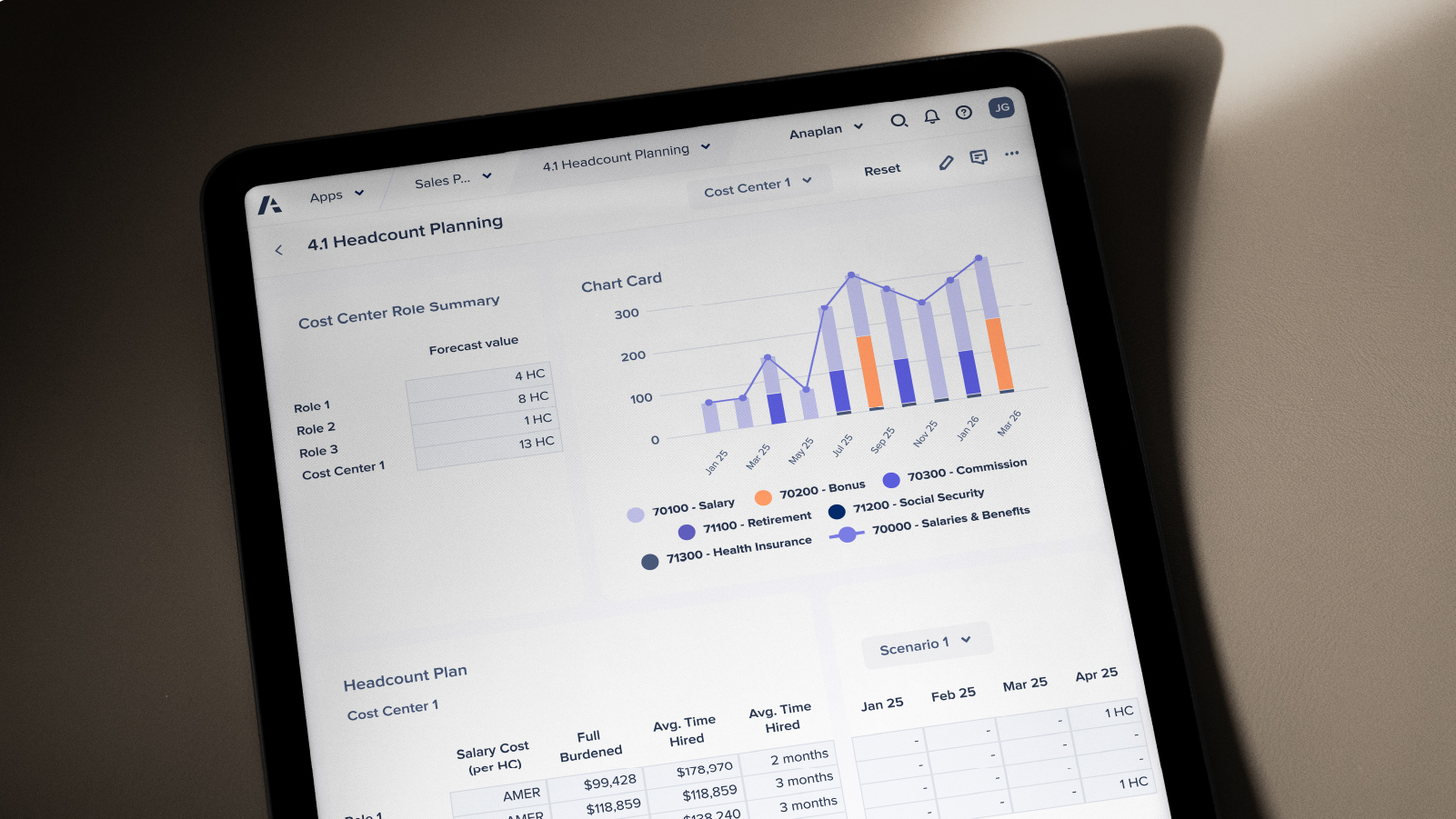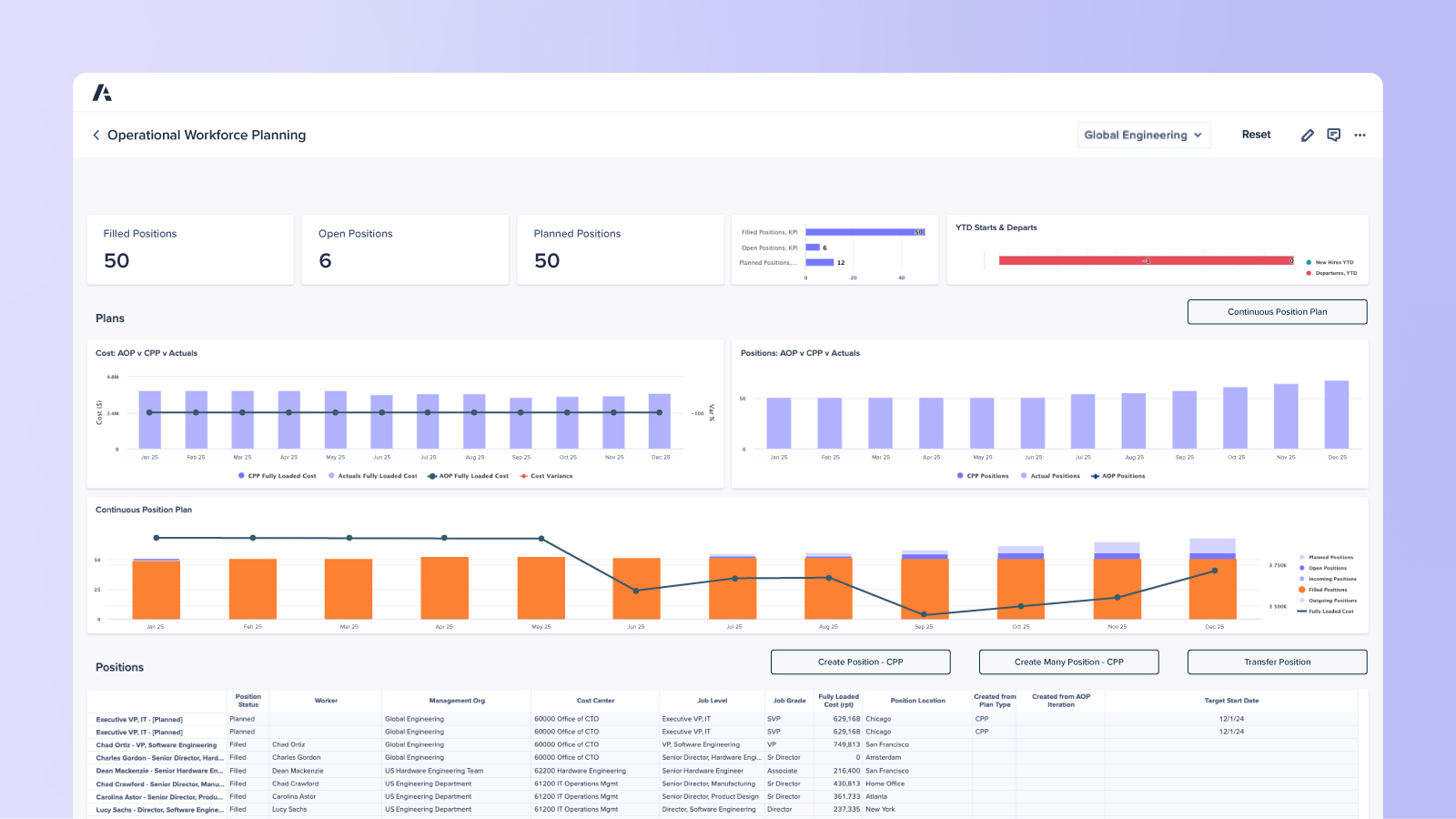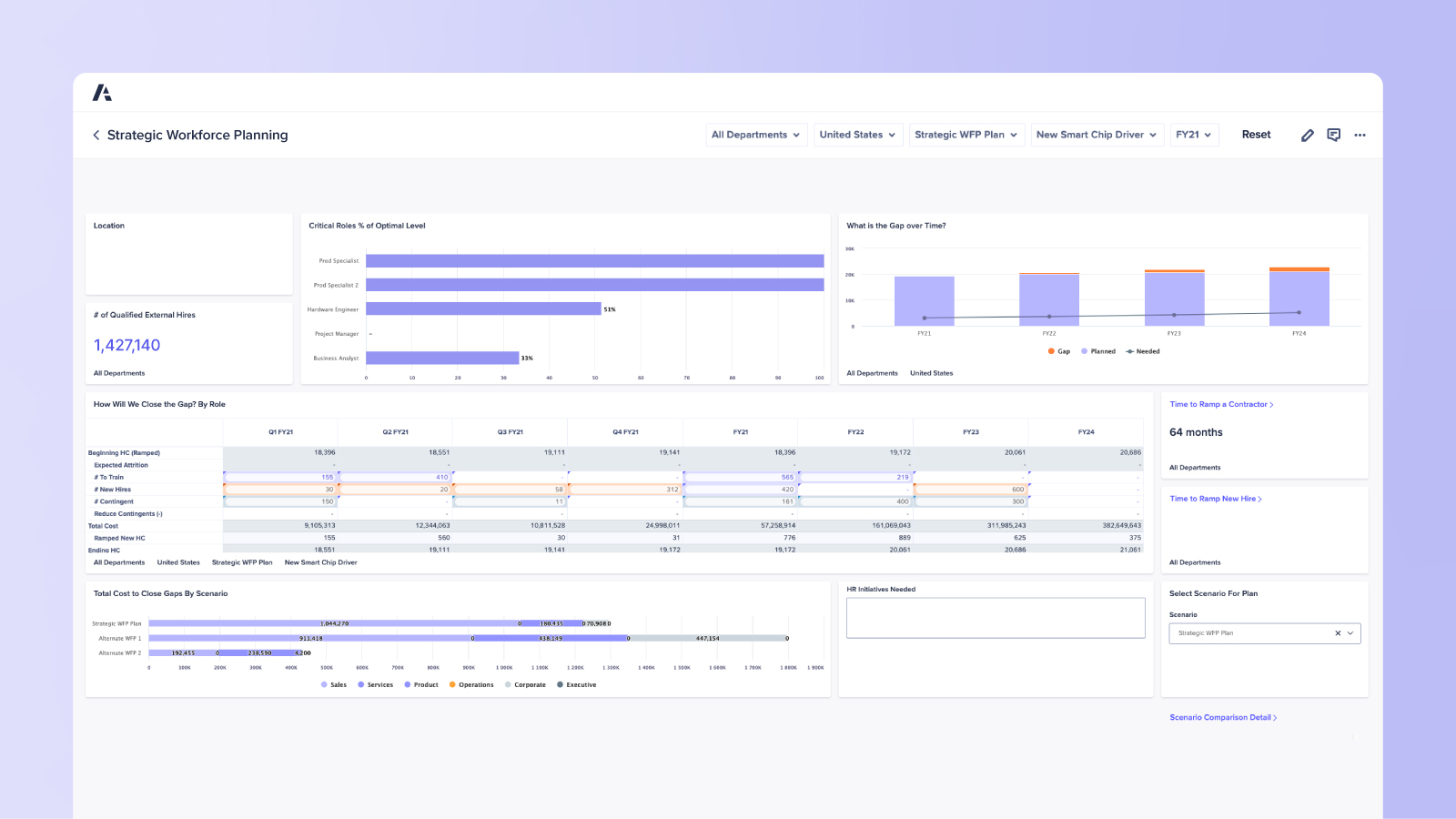Read 2025 ISG Buyers Guide™ for Workforce Planning to see why Anaplan continues to lead in workforce planning innovation
Workforce planning
Uncover workforce gaps. Make impactful decisions.
Scenario planning and analysis solutions to make the right workforce and business decisions, right now.
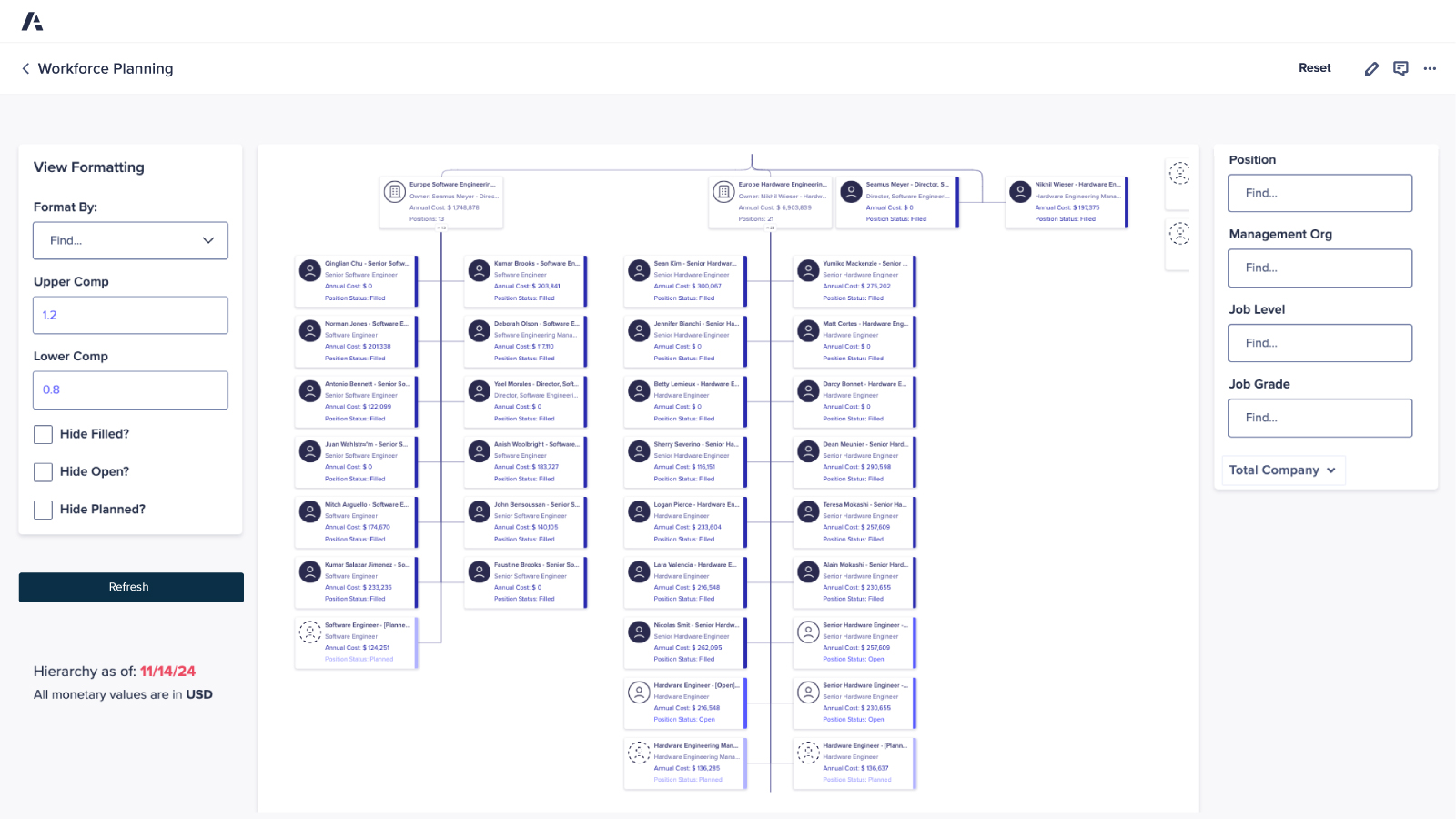
Transform workforce planning with a best-in-class solution that aligns your strategic and operational goals
Give HR, finance, and your business a clear, singular view of your workforce and costs
Collaboratively plan and forecast your workforce, respond swiftly to market and talent-supply changes, and execute your business strategies and performance goals.
Discover our purpose-built, ready-to-deploy Anaplan applications for HR and workforce
Built on the Anaplan agile cloud-native platform, these applications, offering out-of-the-box functionality, are designed for rapid deployment of essential HR and workforce business uses and incorporate best practices for quick value realization.
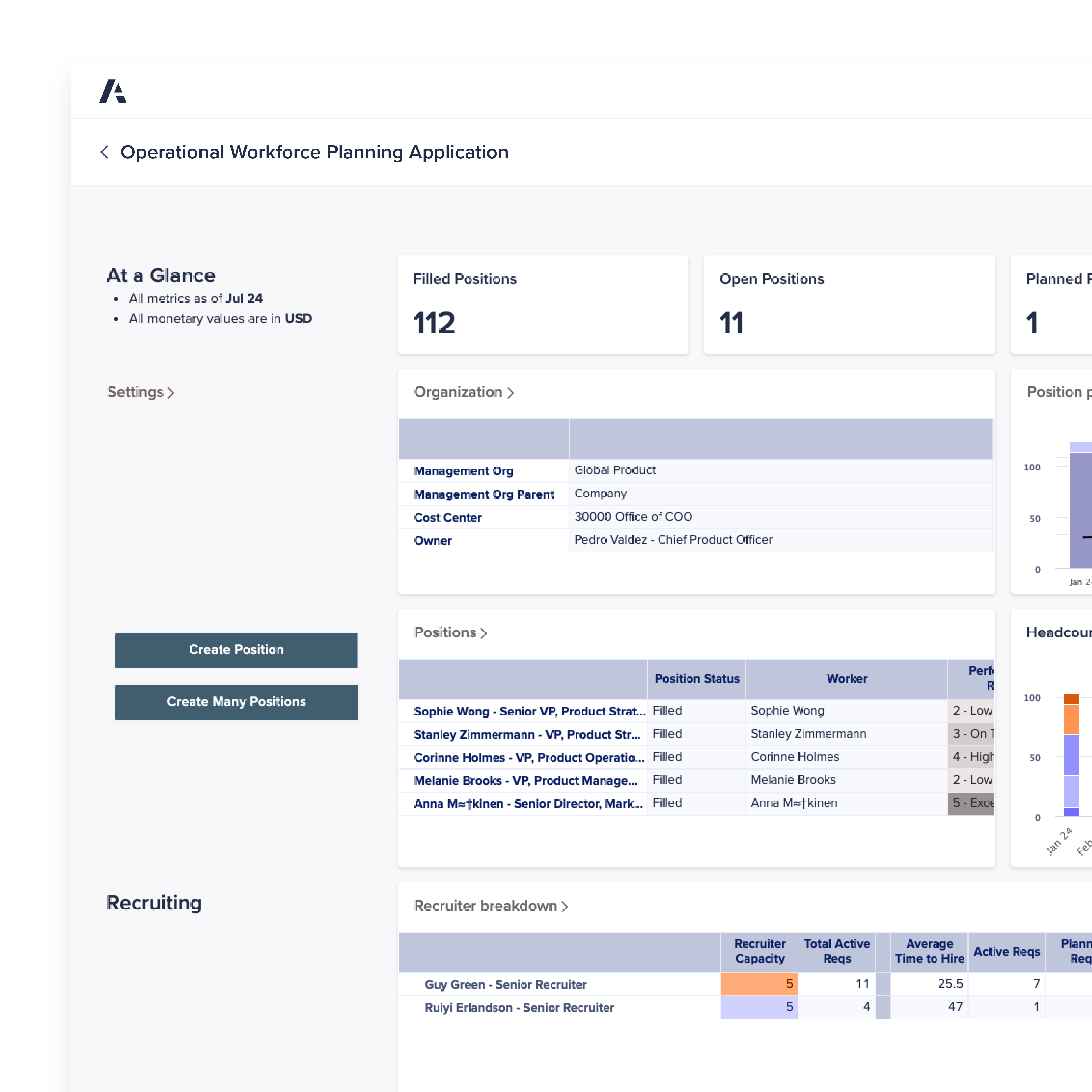
Top HR and workforce leaders
plan with Anaplan
Discover the platform HR and workforce leaders trust. Be the next.
Organizations around the world rely on Anaplan to build a modern, connected enterprise. Shouldn’t you?
